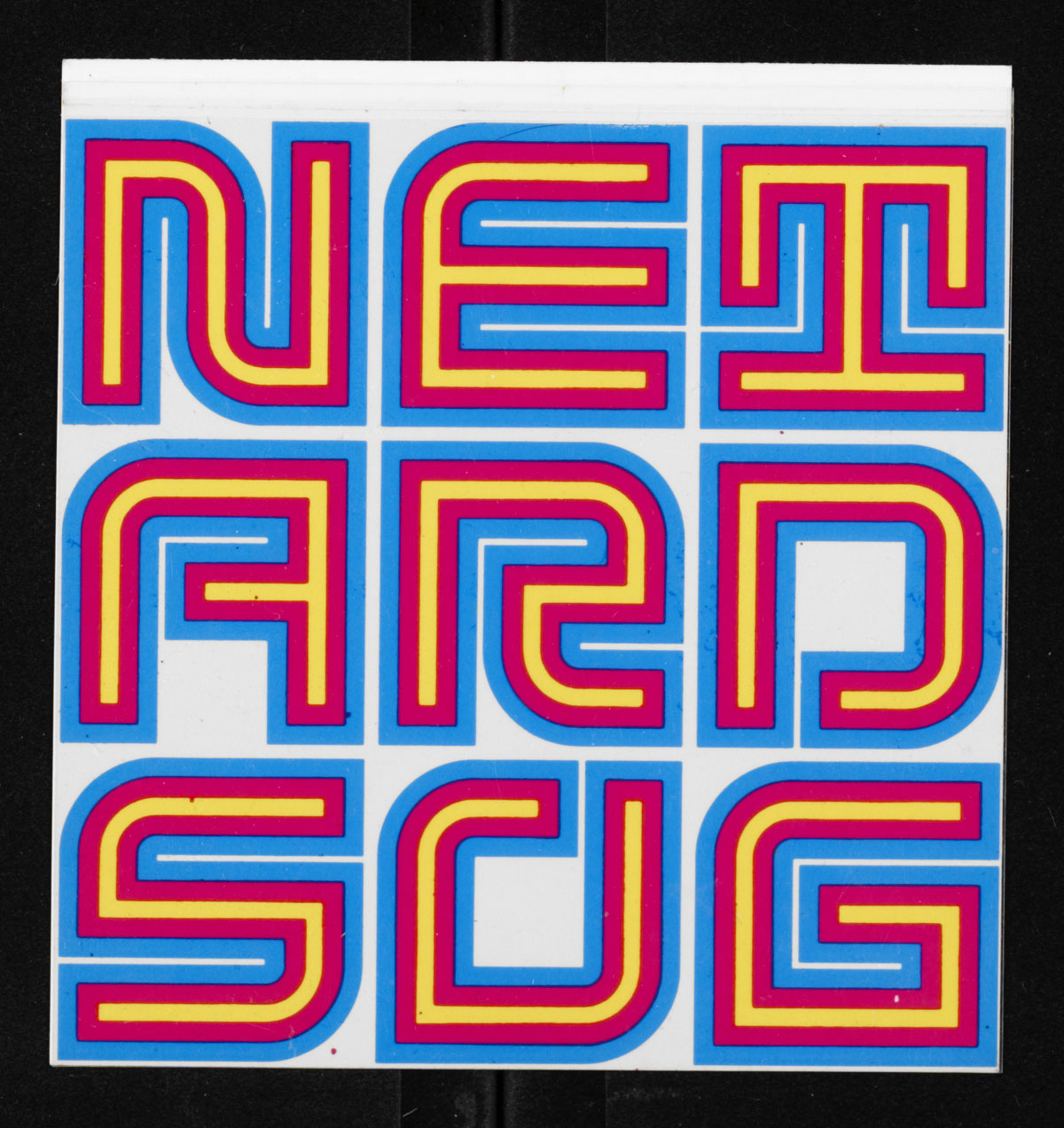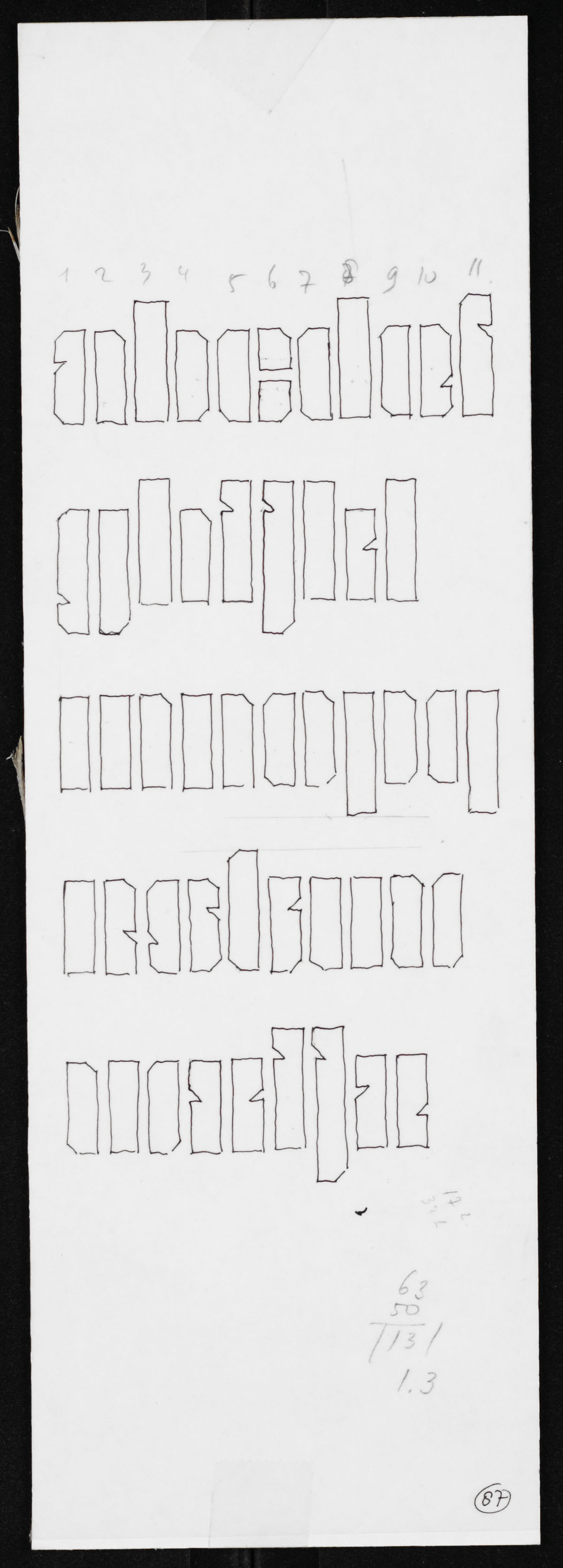Before I arrived at Jurriaan Schrofer’s archive in the Allard Pierson Museum/University of Amsterdam in the spring of 2022, the goal of my research into his constructed scripts was to correct and finish Schrofer’s own attempts to catalog them. He’d done this once for the brochure that accompanied a 1974 exhibit of his designs at the (now defunct) Museum Fodor in Amsterdam, and again in his 1987 book Letters op maat (Letters made to measure). In both cases, his list was incomplete, and I’d hoped to create a true catalog raisonné of his designs.
Once I began to look through the 270 boxes of material in his archive, though, I realized that such a catalog—at least as it’s conventionally understood—would be practically impossible to complete. There are simply too many partially-completed designs, sketches, variations, and alternative directions, scattered too widely among his papers. It would take a team of researchers—armed with a finely-grained index of his archives—years to complete the work.
But as I worked through the materials, I realized that there were definite centers of formal and conceptual gravity among the designs. Any given script could be imagined as a permutation of the design space, repertoire of forms, and construction rules informed by one (sometimes more than one) of these centers. And it’s possible to sort and describe these centers, and their associated scripts, in ways that suggest permutations of those spaces, repertoires, and rules that Schrofer never explored himself. The result would be something like a ‘speculative catalog raisonné’ that would make it possible to capture the breadth and potential of Schrofer’s designs without the literal comprehensiveness of a conventional catalog raisonné.
I’ve identified eleven centers to Schrofer’s designs; in subsequent posts I’ll share them one at a time, with accounts of their parameters and more examples. All images below are either taken by me, and shared courtesy of the Jurriaan Schrofer Archive, Allard Pierson, University of Amsterdam; or from the Dutch National Archive of Graphic Designers (NAGO) public database (Collectie Nederlands Archief Grafisch Ontwerpers).
Center 1:





Center 2:
Center 3:



Center 4:


Center 5:
Center 6:
Center 7:

Center 8:



Center 9:




Center 10:
Center 11:


